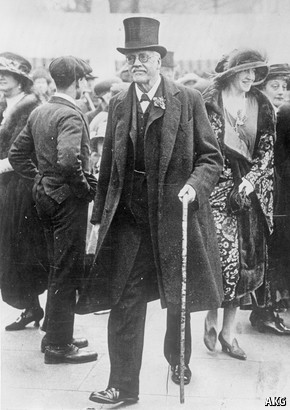
Study: Putting Women in Charge Makes Companies More Successful
October 21, 2014
Recognising Palestine
October 21, 2014Scientific research in the five countries of Central Asia has been stuck in the doldrums since the Soviet Union’s disintegration, leaving it far below European levels.
While research and development (RD) spending in the European Union (EU) states averages around two per cent of GDP (gross domestic product), it is typically less than a tenth of this in Kazakhstan, Kyrgyzstan, Tajikistan, Turkmenistan and Uzbekistan, according to official government statistics quoted in a 2012 EU report. [1]
But an EU scheme launched last year that encourages Central Asian researchers to participate in pan-European research projects could help to narrow this gap.
The International Cooperation Network for Central Asian Countries (IncoNet CA) is striving to get the region’s countries to play a greater role in Horizon 2020, the EU’s eighth research and innovation funding package worth close to 80 billion Euros.
“The application rate to EU projects [from Central Asia] is very low and we’d like to see that increase,” says Kirsten Kienzler, senior scientific officer at the German Aerospace Center’s Project Management Agency, which manages the project.
“Without IncoNet, Central Asia would not be able to cooperate with the European research community.”
Kirsten Kienzler, German Aerospace Center
IncoNet CA does not directly fund scientific research. Instead, it helps Central Asian researchers improve their links with the EU. One method is through ‘twinning’, paying for research teams from both regions to travel to workshops to prepare joint research proposals.
“We’re also organising ‘brokerage’ events to bring together potential collaborators,” Kienzler says.
This will help scientists from Central Asia break into existing research consortiums, which EU-based research organisations dominate, she says.
As ‘outsiders’, Central Asian companies are barred from coordinating EU projects so they must get themselves noticed in other ways if they are to participate in research.
“If European scientists don’t look for partners in Central Asia, then the region will be ignored,” she says. “The idea is to promote the scientific potential of these countries.”
Mutual interests
IncoNet CA targets three areas of science identified as being of “mutual interest” to Europe and Central Asia: energy, health and climate change.
The scheme also has a strong policy focus: its stated aim is to support bi-regional discussions on science, technology and innovation policies to enable joint agenda setting. Last month, for example, it held a policy conference in Bishkek, Kyrgyzstan, on climate change.
The 2012 EU report, which examined enhancing cooperation with Central Asia, sets out the scale of the region’s research infrastructure, giving an indication of the collaboration opportunities available to European researchers.
It says that Kazakhstan has 424 research organisations and around 17,000 research scientists, while Uzbekistan has 202 organisations and nearly 35,000 researchers. The other countries in the region are much smaller: Kyrgyzstan has 84 research organisations and around 5,000 researchers; Tajikistan has nearly 70 organisations and around 5,600 researchers; and Turkmenistan has an estimated 46 organisations and nearly 4,000 research staff.
One leading centre of research in the region is a single site in Tashkent, Uzbekistan, where agricultural research is concentrated. The Regional Program for Sustainable Agricultural Development in Central Asia and the Caucasus houses several global research organisations including eight CGIAR centres, as well as Bioversity International and the regional centre for the International Center for Agricultural Research in the Dry Areas (ICARDA).
Funding pledge
All five Central Asian countries have declared an intention to boost spending on science and technology.
Kazakhstan, for example, has set itself the challenging goal of raising RD spending to one per cent of GDP by 2015 and 1.5 per cent by 2020. Its spending was 0.18 per cent of GDP in 2013. It has also enacted a law that obliges larger corporations to spend one per cent of their profits on scientific research, says Kienzler.
Science in Central Asia faces many challenges, Kienzler adds. The first is language: Russian is still the scientific language of the region, and its researchers’ English skills are typically too limited to enable them to talk to scientists from other regions or to write proposals for research grants, she says.
Also, despite the creation during the Soviet era of an extensive science network filled with well-educated scientists, the research infrastructure is currently in disrepair. And although science had been a prestigious, well-funded profession, that changed after independence.
“The science sector was not the first priority of the new governments,” Kienzler says.
This makes it difficult to convince young scientists to stay in the sector, for example by encouraging them to take a PhD. Kienzler points to a 2010 report from UNESCO (the UN Educational, Scientific and Cultural Organization) that says that only two per cent of PhD-level researchers are under 40. [2]
Wider collaboration
Scientific cooperation in general between post-Soviet countries in the region is also patchy, although there are some notable exceptions: the Innovative Biotechnologies programme between Belarus, Kazakhstan, Russia and Tajikistan aims to raise the competitiveness of their biotechnology sectors. This five-year, European-Asian Economic Community (EurAsEc) project ends in 2015.
Last year, Belarus, Kazakhstan and Russia agreed to fund a Centre for High Technologies with the aim of supporting around 15 innovation projects in areas such as nanotechnology, medicine and new materials.
And a similar project, IncoNet EaP, caters to the six ‘Eastern Partnership’ countries of Armenia, Azerbaijan, Belarus, Georgia, Moldova and Ukraine.
These countries have fared slightly better than those in Central Asia since the Soviet Union’s collapse: their equivalent RD spend ranges from 0.2 per cent of GDP in Azerbaijan to 0.8 per cent in Ukraine, according to the 2012 EU report.
Regional participants say that IncoNet allows them to “learn the rules” of the EU’s Horizon 2020 programme so they can contribute to projects within it.
“IncoNet has helped our local clients find eligible calls for proposals and appropriate partners,” says Kamila Magzieva, director of the Independent Expert Consulting Board, which coordinates Kazakh participation in Horizon 2020. She says that around ten Horizon 2020 project proposals include partners from the country.
She believes IncoNet CA is vital in bringing local researchers into EU research programmes.
“Without IncoNet, Central Asia would not be able to cooperate with the European research community,” says Magzieva. “The internal rules for research and technology development differ between Central Asia and the EU: IncoNet is our bridge between the two systems.”



